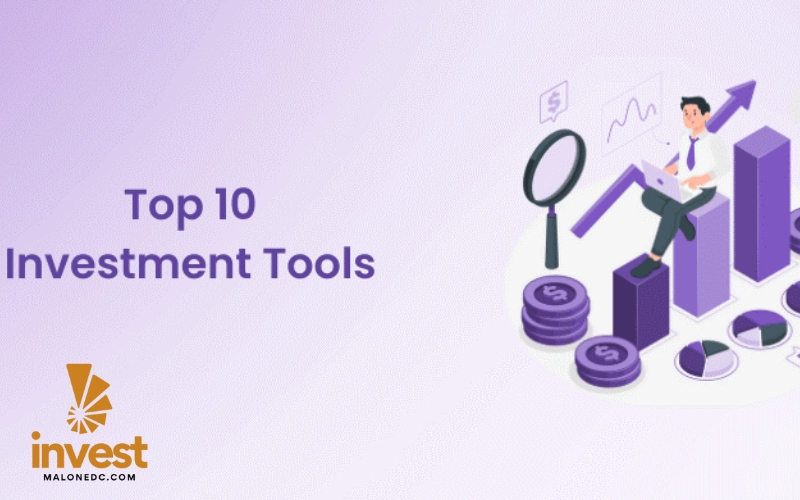For new investors, learning and using the right investment tools is an important factor in helping them achieve success in the investment process. These tools not only help investors make informed investment decisions but also help minimize risks and maximize profits in the long term. Below are some useful investment tools that new investors can apply to build and develop their investment portfolio.
1. STOCK TRADING PLATFORMS
One of the most important tools for new investors is stock trading platforms. This is where investors can make transactions to buy and sell stocks, bonds and other financial assets. Today’s stock trading platforms often have user-friendly interfaces and provide technical analysis tools, helping investors track price movements and make timely buying and selling decisions.
In addition, these platforms also provide educational resources, helping new investors better understand how the stock market works and effective investment methods. For example, popular platforms such as Robinhood, E*TRADE, and TD Ameritrade all provide free learning tools and resources for new investors.

2. TECHNICAL ANALYSIS TOOLS
Technical analysis is an important method in stock investment, helping investors predict price trends of stocks or other financial assets based on historical data on prices and trading volumes. For new investors, using technical analysis tools can help them better understand the market and make smart investment decisions.
Popular technical analysis tools include candlestick charts, moving averages, RSI (Relative Strength Index), MACD (Moving Average Convergence Divergence), and many others. These tools help investors identify buy or sell signals, thereby making the right investment decisions. Stock trading platforms such as TradingView and MetaTrader both provide powerful technical analysis tools for users.
3. INDEX FUNDS AND ETFS
A useful investment tool for new investors is Index Funds and ETFs (Exchange-Traded Funds). These are passive funds that invest in a basket of stocks that represent a particular market index, such as the S&P 500 or the NASDAQ. Instead of having to choose individual stocks, investors can invest in these funds and diversify their portfolios easily.
For new investors, index funds and ETFs are ideal options because they provide automatic diversification, which reduces risk and saves time searching for stocks. These funds typically have low management costs and can provide stable returns over the long term. Furthermore, new investors do not need much experience to invest in these funds, as they are managed by investment professionals.
4. PORTFOLIO MANAGEMENT TOOLS
Portfolio management is an important part of optimizing returns and minimizing risk. For new investors, using portfolio management tools helps them track and analyze their investments more effectively. These tools can help investors review asset allocations, monitor the performance of their investments, and make decisions about adjusting their portfolios when necessary.
Some popular portfolio management tools include Personal Capital, Mint, and Morningstar. These tools not only help new investors track their investments, but also provide detailed reports on their financial performance, which can help them make better investment decisions in the future.
5. TOOLS FOR ASSET VALUATION
In order to invest effectively, investors need to be able to properly assess the value of the assets they intend to invest in. Asset evaluation tools include financial analysis software, company financial statements, as well as basic indicators such as P/E ratio (Price-to-Earnings), Debt-to-Equity Ratio, and many others. These tools help investors better understand the financial situation of the company and its future earning potential.
Financial analysis tools such as Yahoo Finance, Bloomberg, and Google Finance are important resources for evaluating stocks and assets. New investors can use these tools to research companies, industries, and factors that affect the value of assets, thereby making informed investment decisions.
6. MOBILE APPS FOR INVESTING
Today’s mobile apps help new investors access the market and make transactions quickly and conveniently. These apps provide a full range of trading and analysis tools, allowing investors to monitor their portfolios and make transactions anytime, anywhere.
For example, Robinhood, E*TRADE, and TD Ameritrade all have easy-to-use mobile apps that help investors make transactions, track stock prices, and analyze the market right on their phones. These apps are very convenient for new investors who do not have much time to monitor the market from their computers, but still want to seize investment opportunities in a timely manner.
7. TOOLS FOR BUILDING INVESTMENT GOALS
To be successful in investing, new investors need to have clear goals and a specific investment plan. Tools for building investment goals can help investors determine their desired return, acceptable risk level, and required investment time horizon. These tools also help investors track progress and adjust their plans when necessary.
Tools such as SmartAsset and Wealthfront provide calculations and analysis to help investors define financial goals and create a reasonable investment plan. Setting clear investment goals not only helps new investors have a clear direction but also helps them maintain patience in the long-term investment process.
CONCLUSION
Useful investment tools for new investors play an important role in helping them build a successful investment portfolio and achieve their long-term financial goals. By using tools such as stock trading platforms, technical analysis tools, index funds and ETFs, portfolio management tools, and many others, new investors can easily enter the market and optimize their profits. However, it is important that investors always learn and improve their investment skills to make accurate and effective decisions.
